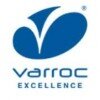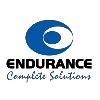Filter interviews by
IAI Industries Quality Engineer Interview Questions and Answers
IAI Industries Quality Engineer Interview Experiences
1 interview found
Interview Questionnaire
3 Questions
- Q1. What is 8d
- Ans.
8D is a problem-solving methodology used to identify, correct, and prevent recurring problems.
8D stands for 8 Disciplines
It is commonly used in the automotive and manufacturing industries
The 8 disciplines include steps such as defining the problem, implementing and verifying corrective actions, and preventing recurrence
It emphasizes teamwork and data-driven decision making
- Q2. Symbol of 1st angle 3rd angle
- Ans.
The symbols of 1st and 3rd angle are used in engineering drawings to indicate the orientation of the object being drawn.
The symbol for 1st angle projection is a square with one corner cut off and an arrow pointing towards the center of the square.
The symbol for 3rd angle projection is a square with one corner cut off and an arrow pointing away from the center of the square.
The symbol is usually placed in the lower righ...
- Q3. What means by 5s
- Ans.
5S is a workplace organization method that aims to improve efficiency and productivity by maintaining an orderly and clean work environment.
5S stands for Sort, Set in Order, Shine, Standardize, and Sustain
Sort involves removing unnecessary items from the workplace
Set in Order involves organizing the remaining items in a logical and efficient manner
Shine involves cleaning and maintaining the workplace
Standardize involve...
Top trending discussions






Interview questions from similar companies

Interview Questionnaire
1 Question
- Q1. Genral diploma mechanical Related question

I applied via Job Portal and was interviewed before Feb 2021. There were 2 interview rounds.

(1 Question)
- Q1. Explain about the quality tools and techniques
- Ans.
Quality tools and techniques are used to ensure and improve the quality of products and processes.
Quality control charts: Used to monitor and control process variations.
Cause-and-effect diagrams: Help identify and analyze potential causes of problems.
Pareto charts: Used to prioritize and focus on the most significant issues.
Root cause analysis: A systematic approach to identify the underlying causes of problems.
Statist...
Interview Preparation Tips

Interview Questionnaire
4 Questions
- Q1. Personal and functional
- Q2. About your job description and processes and your achievements
- Q3. Your plus and minus
- Q4. Senior Management Intraction on the basis of personal, behavioral, backgrounds,job function and achievements.

Senior Engineer Interview Questions & Answers
Samvardhana Motherson Groupposted on 19 Jan 2021
I appeared for an interview in Jul 2020.
Interview Questionnaire
1 Question
- Q1. Waht is your achievements
- Ans.
I have achieved several milestones throughout my career as a Senior Engineer.
Successfully led a team of engineers to develop and implement a new software system, resulting in a 20% increase in efficiency.
Received recognition for designing and implementing a cost-effective solution that reduced production downtime by 30%.
Contributed to the development of a groundbreaking technology that revolutionized the industry, lead...
Interview Preparation Tips

Senior Engineer Interview Questions & Answers
Samvardhana Motherson Groupposted on 1 Jun 2020
I applied via Naukri.com and was interviewed in May 2020. There were 4 interview rounds.
Interview Questionnaire
3 Questions
- Q1. What are the die casting and machining defects?
- Ans.
Die casting and machining defects are common in manufacturing processes.
Die casting defects include porosity, shrinkage, cold shuts, and flash.
Machining defects include burrs, chatter marks, and tool marks.
Die casting defects can be caused by improper temperature, pressure, or metal flow.
Machining defects can be caused by dull tools, improper speeds and feeds, or poor fixturing.
Defects can lead to part failure, reduced
- Q2. What is the formula of filling and high speed ratio?
- Ans.
Filling and high speed ratio formula is used to calculate the filling time of a container with a specific volume of liquid at a given flow rate.
Filling and high speed ratio formula is V/Q
V is the volume of the container and Q is the flow rate of the liquid
The formula is used to determine the time it takes to fill a container with a specific volume of liquid at a given flow rate
The higher the flow rate, the faster the c
- Q3. Why do u want to join Motherson?
Interview Preparation Tips

Interview Questionnaire
2 Questions
- Q1. No one Question asked.
- Q2. It is Direct joining because of Training.

I applied via Recruitment Consultant and was interviewed before Jan 2021. There was 1 interview round.
Interview Questionnaire
3 Questions
- Q1. How many level in ppap
- Ans.
There are 5 levels in PPAP (Production Part Approval Process).
PPAP has 5 levels: Level 1, Level 2, Level 3, Level 4, and Level 5.
Each level represents a different stage of the PPAP process.
Level 1 includes documentation submission, while Level 5 involves customer approval.
The higher the level, the more comprehensive the PPAP requirements become.
PPAP is used to ensure that suppliers meet the quality standards of their c
- Q2. Difference between cp and cpk
- Ans.
Cp measures the capability of a process to meet specifications, while Cpk measures the capability of a process to meet specifications considering centering.
Cp is a short-term capability index, while Cpk is a long-term capability index.
Cp considers only the spread of the process, while Cpk considers both the spread and the centering of the process.
Cp is calculated using the formula Cp = (USL - LSL) / (6 * standard devia...
- Q3. What is capa
- Ans.
CAPA stands for Corrective and Preventive Action. It is a systematic approach to identify, investigate, and resolve quality issues.
CAPA is a key component of quality management systems.
It involves identifying the root cause of a problem, implementing corrective actions to address the immediate issue, and preventive actions to prevent recurrence.
CAPA processes typically include steps like problem identification, investi...
Interview Preparation Tips

Interview Questionnaire
1 Question
- Q1. I am employ of varroc engineering pvt & limited Pant nagar I am jurying in the varroc of internship after the intenship I interested for this job( may i join this job ???) pls reply me sir

Interview Questionnaire
7 Questions
- Q1. What is SPC ? explain briefly.
- Ans.
SPC stands for Statistical Process Control. It is a method of quality control that uses statistical methods to monitor and control a process.
SPC involves collecting and analyzing data to identify and reduce variation in a process
It helps to ensure that a process is operating within its specified limits and is capable of producing consistent results
Examples of SPC tools include control charts, histograms, and Pareto cha...
- Q2. What is corrective action and preventive action?
- Ans.
Corrective action is taken to address and resolve existing problems, while preventive action is taken to prevent potential problems from occurring.
Corrective action focuses on addressing and resolving existing problems or nonconformities.
Preventive action focuses on identifying and eliminating potential problems before they occur.
Corrective action is reactive, while preventive action is proactive.
Corrective action aims...
- Q3. Whow would you describe yourself?
- Ans.
I am a detail-oriented Quality Engineer with a passion for continuous improvement and problem-solving.
Detail-oriented with a focus on quality standards
Passionate about continuous improvement
Skilled in problem-solving and root cause analysis
- Q4. Explain steps for demin wheels.
- Ans.
The steps for demin wheels involve cleaning, inspecting, repairing, and testing.
Clean the wheels thoroughly to remove any dirt or debris.
Inspect the wheels for any damage or defects.
Repair any issues found, such as replacing worn-out parts or fixing cracks.
Test the wheels to ensure they meet quality standards and perform as expected.
- Q5. What is hardness?Explain briefly
- Ans.
Hardness is the measure of a material's resistance to indentation or scratching.
Hardness is a property of materials that determines their ability to withstand deformation
It is often measured using tests like the Rockwell, Brinell, or Vickers hardness tests
Hardness can be influenced by factors such as the material's composition, heat treatment, and microstructure
Higher hardness generally indicates greater strength and d...
- Q6. How to upgrade suppliers?
- Ans.
To upgrade suppliers, establish clear quality standards, conduct regular audits, provide feedback and support for improvement, and consider alternative suppliers.
Establish clear quality standards and communicate them to suppliers
Conduct regular audits to assess supplier performance and identify areas for improvement
Provide feedback and support to suppliers to help them meet quality standards
Consider alternative supplie...
- Q7. Supplier selection criteria.
- Ans.
Supplier selection criteria are the factors and considerations used to evaluate and choose suppliers for a company's procurement needs.
Quality and reliability of products or services
Supplier's financial stability and ability to meet demand
Supplier's track record and reputation
Cost and pricing
Supplier's location and proximity to the company
Supplier's compliance with industry standards and regulations
Supplier's capacity ...
Interview Preparation Tips
Experience: resume should be to the point and should include what work had you done in past
IAI Industries Interview FAQs
Tell us how to improve this page.
Interview Questions for Popular Designations
- Quality Inspector Interview Questions
- Senior Quality Engineer Interview Questions
- Quality Controller Interview Questions
- Quality Assurance Interview Questions
- Quality Manager Interview Questions
- Quality Executive Interview Questions
- Quality Assurance Officer Interview Questions
- Quality Assurance Quality Control Engineer Interview Questions
- Show more
Quality Engineer Interview Questions from Similar Companies
|
Production Engineer
8
salaries
| ₹2 L/yr - ₹4 L/yr |
|
Senior Engineer
6
salaries
| ₹3.8 L/yr - ₹5 L/yr |
|
Production Supervisor
6
salaries
| ₹1.2 L/yr - ₹2.7 L/yr |
|
Quality Engineer
6
salaries
| ₹1.5 L/yr - ₹3.6 L/yr |
|
QA Engineer
6
salaries
| ₹2.4 L/yr - ₹3.2 L/yr |

Bosch

JBM Group

Samvardhana Motherson Group

Subros
- Home >
- Interviews >
- IAI Industries Interview Questions >
- IAI Industries Quality Engineer Interview Questions










